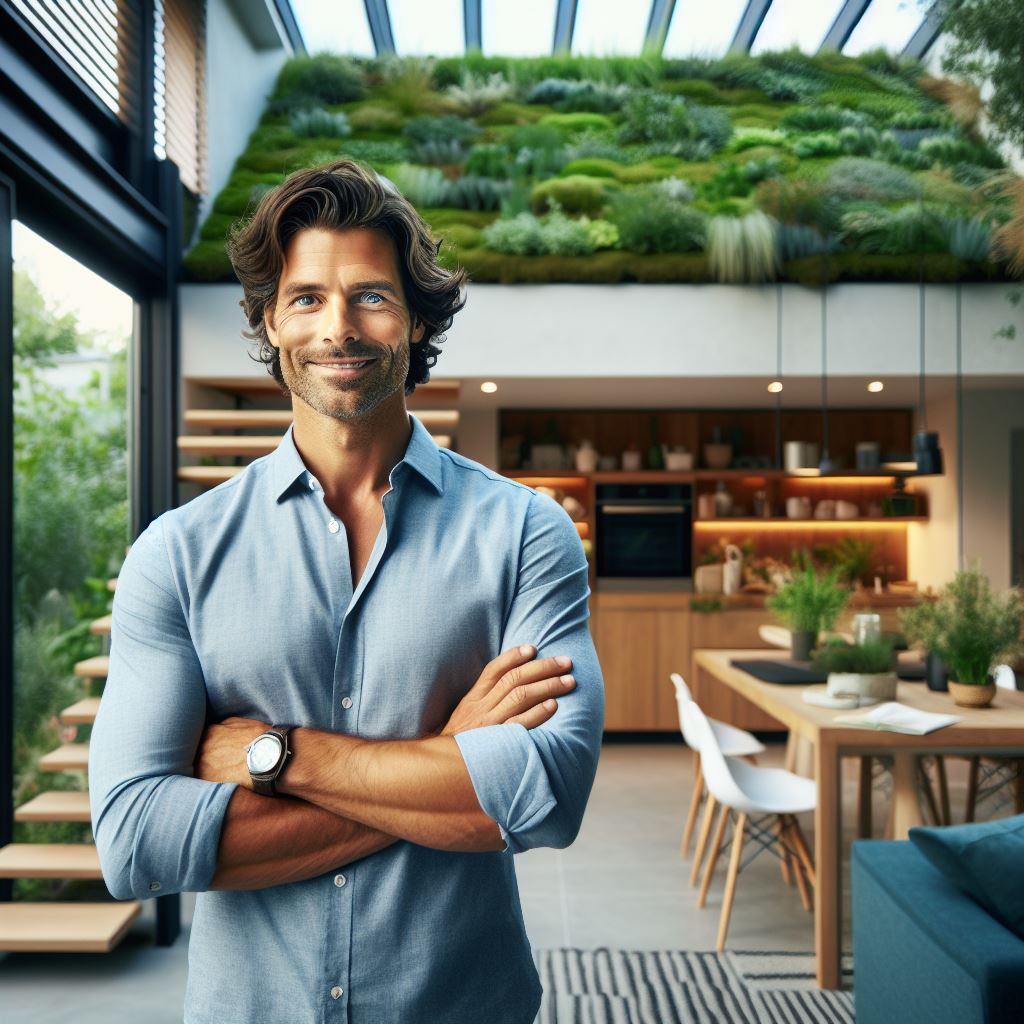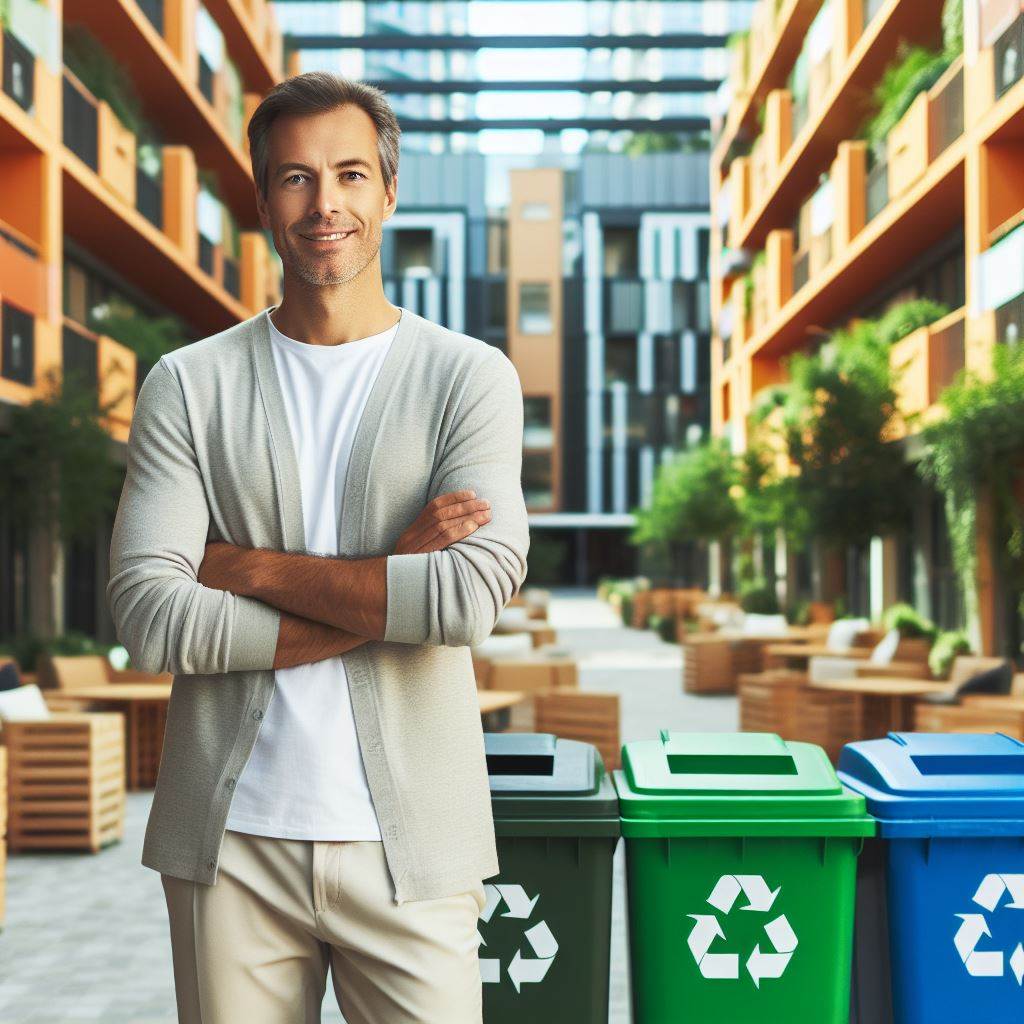Introduction
In the ever-evolving landscape of urban living, the concept of green roofs has emerged as a sustainable solution, transforming the way we perceive and utilize urban properties.
In this post, we delve into the fundamental elements of green roofs and explore their profound impact on urban environments.
A green roof, often referred to as a living roof or eco-roof, is a system that involves the cultivation of vegetation on building rooftops.
It goes beyond a mere aesthetic addition; green roofs are engineered systems designed to support plant life, providing a range of environmental, economic, and social benefits.
Green roofs are classified into two main types: extensive and intensive.
Extensive green roofs feature low-maintenance, drought-tolerant plants, suitable for lightweight structures.
On the other hand, intensive green roofs accommodate a more diverse range of plants, resembling traditional gardens with deeper soil layers.
Both types contribute to the core objective of enhancing urban sustainability.
Urban properties, characterized by concrete jungles and towering structures, face a myriad of challenges including heat islands, air pollution, and stormwater runoff.
As cities expand, preserving green spaces becomes increasingly challenging.
Urban dwellers often find themselves disconnected from nature, leading to a decline in overall well-being.
Green roofs present a paradigm shift in the way we view and utilize urban properties.
By converting barren rooftops into thriving ecosystems, green roofs mitigate the adverse effects of urbanization.
They act as natural insulators, reducing the urban heat island effect and lowering energy consumption.
Furthermore, these eco-friendly rooftops absorb rainwater, reducing stormwater runoff and alleviating the burden on urban drainage systems.
In the subsequent sections, we will delve into the multifaceted benefits of green roofs, exploring their positive impacts on energy efficiency, biodiversity, and community well-being.
Join us on this journey as we uncover the green revolution unfolding above our heads, reshaping the skyline of our urban landscapes.
Environmental Benefits of Green Roofs
Green roofs are not just aesthetically pleasing additions to urban properties, they also provide numerous environmental benefits.
In this section, we will explore the environmental advantages of incorporating green roofs into urban areas.
Reduction in air pollution
One of the key environmental benefits of green roofs is their ability to absorb harmful gases.
Green roofs act as filters, trapping and neutralizing pollutants that are present in urban environments.
By having green roofs on buildings, the air quality in cities can be significantly improved.
Additionally, green roofs also help filter pollutants from the air.
The plants on green roofs capture dust particles and other pollutants, preventing them from entering the atmosphere and causing further air pollution.
Decrease in urban heat island effect
Green roofs contribute to the reduction of the urban heat island effect by providing a cooling effect.
The vegetation on green roofs absorbs and reflects sunlight instead of letting it be absorbed as heat by traditional roofs.
This reduces the overall temperature of urban areas and helps create a more comfortable climate.
Furthermore, the cooling effect of green roofs leads to lower energy consumption.
With green roofs, buildings require less air conditioning during hot summer months, resulting in reduced energy usage and lower carbon emissions.
This can contribute to overall energy savings and a greener, more sustainable urban environment.
Mitigation of stormwater runoff
Another significant environmental benefit of green roofs is their ability to mitigate stormwater runoff.
Green roofs retain rainwater, allowing it to be absorbed by plants and slowly released back into the atmosphere through evaporation.
This natural water retention reduces the volume and intensity of stormwater runoff, thereby alleviating pressure on urban drainage systems.
By decreasing the amount of stormwater entering drainage systems, green roofs help prevent issues such as flooding and sewer overflows.
They act as a natural buffer, reducing the strain on infrastructure and ensuring a more efficient water management system in urban areas.
In fact, green roofs offer several environmental benefits for urban properties.
They contribute to the reduction of air pollution by absorbing harmful gases and filtering pollutants.
Green roofs also help decrease the urban heat island effect by providing a cooling effect and reducing energy consumption.
Lastly, they mitigate stormwater runoff by retaining rainwater and relieving pressure on drainage systems.
Incorporating green roofs into urban landscapes is a sustainable and eco-friendly solution with wide-ranging environmental advantages.
Read: Eco-friendly Insulation in Property Mangement
Economic Benefits of Green Roofs
Energy savings
Green roofs provide numerous economic benefits for urban properties.
One of the primary advantages is energy savings.
By having a green roof, property owners can experience a reduction in their heating and cooling costs.
The vegetation and additional layers of insulation provided by green roofs help regulate temperatures inside buildings, resulting in lower energy usage for climate control.
Extended roof lifespan
In addition to energy savings, green roofs also contribute to the extended lifespan of roofs.
The protective layer of plants shields the underlying roofing materials from UV radiation and extreme temperatures, preventing damage and degradation.
Consequently, property owners can save on maintenance and replacement expenses.
Green roofs require less frequent repairs compared to traditional roofs, resulting in long-term cost savings.
Increased property value
Furthermore, implementing green roofs can increase the value of urban properties.
Their aesthetically pleasing appearance enhances the overall look of buildings, making them more attractive to potential buyers or tenants.
The vibrant green vegetation and unique design elements of green roofs can distinguish a property from surrounding structures, adding desirability and value.
Moreover, green roofs align with the growing demand for sustainable and eco-friendly features in properties.
Many environmentally-conscious buyers actively seek out properties with green roofs as they demonstrate a commitment to mitigating climate change and reducing environmental impact.
The presence of a green roof can make a property more marketable and appealing to this niche market segment.
In essence, the economic benefits of green roofs in urban properties are substantial.
They contribute to energy savings by reducing heating and cooling costs, extend the lifespan of roofs, and increase property value through enhanced aesthetics and sustainable features.
As the importance of sustainability continues to rise, incorporating green roofs in urban settings will prove to be a wise investment in the long run.
Read: Sustainable Landscaping for Properties

Improved Livability in Urban Areas
Green roofs offer numerous benefits for urban areas, improving the livability and overall quality of life for residents.
One of the key advantages is noise reduction.
Urban environments are often plagued by continuous noise from traffic, construction, and other sources.
Green roofs act as natural sound barriers, absorbing sound waves and reducing noise pollution.
This helps create a quieter and more peaceful environment.
Noise reduction
In addition to noise reduction, green roofs also contribute to enhanced acoustic comfort.
By absorbing and scattering sound waves, they can improve the overall acoustic quality of urban spaces.
This is particularly important in densely populated areas where noise can be a significant issue.
Green roofs help to create a more pleasant and enjoyable urban environment, making it easier for residents to relax and engage in everyday activities without being disturbed by excessive noise.
Creation of green spaces
Another valuable aspect of green roofs in urban properties is the creation of green spaces.
These roofs provide opportunities for recreation and relaxation, offering residents a place to unwind and connect with nature.
Whether it’s a rooftop garden or a communal space with seating areas, green roofs enhance the livability of urban areas by providing residents with access to green environments.
This not only improves the aesthetic appeal of the area but also contributes to the mental well-being of individuals living in urban environments.
Promotion of biodiversity
Moreover, green roofs promote biodiversity in urban areas.
By creating habitats for plants, insects, and birds, green roofs help to support urban ecosystems.
Traditional roofs lack vegetation, limiting the availability of resources and habitats for various species.
Green roofs provide a solution by offering a haven for wildlife, including pollinators and birds.
This contributes to the preservation of urban ecology and helps to maintain a balance between the built environment and nature.
Overall, incorporating green roofs in urban properties improves livability by reducing noise pollution, creating green spaces, and promoting biodiversity.
These benefits enhance the quality of life for residents and contribute to a more sustainable and enjoyable urban environment.
As cities continue to expand and urbanization becomes more prevalent, the implementation of green roofs becomes crucial in mitigating the negative effects of urban development.
Read: Water-Saving Tips for Property Managers
Challenges and Considerations
While green roofs offer numerous benefits, there are several challenges and considerations to address before their implementation.
This section will discuss some of the key challenges that property owners and developers may face when considering green roofs for urban properties.
Initial installation costs
One of the main challenges associated with green roofs is the initial installation costs.
The process of installing a green roof involves investments in waterproofing and structural reinforcement to ensure the roof can support the added weight of the vegetation and soil.
These costs can be significant, especially for existing buildings that require retrofitting.
However, it is important to consider the long-term savings that green roofs can provide.
Despite the high upfront expenses, green roofs can result in significant energy savings by improving insulation and reducing the need for artificial cooling and heating.
Additionally, they can help manage stormwater runoff, which can lower costs associated with drainage systems and reduce the strain on municipal infrastructure.
Maintenance requirements
Maintaining green roofs requires regular inspections and plant care to ensure their health and functionality.
Property owners or managers must allocate resources for tasks such as pruning, fertilizing, and irrigation.
It is essential to have a maintenance plan in place to identify potential issues early on and address them promptly.
Collaboration with professionals is crucial for the successful maintenance of green roofs.
Horticulturists or landscape architects can provide expertise on plant selection, pest control, and irrigation system management.
Regular collaboration with these professionals can help property owners optimize the performance and lifespan of the green roof.
Legal regulations and permits
Implementing green roofs in urban areas is subject to various legal regulations and permits.
Property owners must ensure compliance with building codes to guarantee the safety and structural integrity of the installation.
Zoning restrictions may also dictate the feasibility and design of green roofs in certain areas.
Obtaining the necessary permits for green roof implementation may require an application process.
This process often involves providing detailed plans and specifications, as well as complying with any additional requirements set by local authorities or environmental agencies.
It is essential to familiarize oneself with the specific regulations and permit requirements in the relevant jurisdiction.
Overall, addressing the challenges and considerations associated with green roofs is crucial for the successful implementation and maintenance of these sustainable features on urban properties.
While initial costs and legal requirements may pose some difficulties, the long-term benefits in terms of energy efficiency, stormwater management, and environmental impact make green roofs a worthwhile investment.
Read: Smart Tech for Eco-Friendly Properties
Case Studies and Success Stories
Green roofs have become increasingly popular in urban areas due to their numerous benefits.
Examples of cities with successful green roof programs
Several cities have successfully implemented green roof programs, such as Chicago, Illinois, and Toronto, Canada.
These cities serve as excellent case studies and success stories for the positive impact of green roofs on urban properties.
Chicago, Illinois, stands out as a prime example of a city with a successful green roof program.
The city’s Green Roofs Program, initiated in 2004, encourages property owners to install green roofs by providing various incentives and financial assistance.
Through this program, Chicago has seen the installation of over 600 green roofs, covering approximately 5.5 million square feet.
These green roofs have helped reduce stormwater runoff, improve air quality, and provide additional green space in the city.
Similarly, Toronto, Canada, has made significant progress in promoting green roofs.
The city has implemented the Green Roof Bylaw, which requires all new residential, industrial, and institutional buildings to have a green roof.
Toronto’s green roof program has been highly successful, resulting in the installation of over 3.6 million square feet of green roofs throughout the city.
These green roofs have contributed to energy savings, reduced greenhouse gas emissions, and enhanced the city’s overall sustainability.
Benefits experienced by property owners and the community
Property owners and the community at large have experienced numerous benefits from these green roof programs.
One of the most significant advantages is the reduced energy costs for buildings.
Green roofs act as insulators, providing natural thermal regulation that reduces the need for excessive heating and cooling.
This, in turn, leads to lower energy consumption and cost savings for property owners.
Furthermore, green roofs support increased biodiversity and improved air quality.
These rooftop gardens provide habitats for various plant species, attracting birds, butterflies, and other beneficial insects.
The presence of green roofs creates a more favorable environment for urban wildlife, contributing to the overall ecological balance in densely populated areas.
Additionally, green roofs help filter pollutants from the air, reducing the impact of airborne pollutants on public health.
All in all, cities like Chicago and Toronto have demonstrated the success of their green roof programs, providing valuable case studies and success stories.
The benefits experienced by property owners and the community include reduced energy costs, increased biodiversity, and improved air quality.
These examples highlight the importance of implementing green roof programs in urban areas to foster sustainable development and create a healthier environment for all.
Conclusion
In the ever-evolving landscape of urban development, the integration of green roofs has emerged as a crucial solution for addressing environmental challenges.
Throughout this discourse, we have delved into the myriad benefits that green roofs bring to urban properties.
From mitigating the urban heat island effect to promoting biodiversity, green roofs act as a natural shield against the adverse impacts of rapid urbanization.
Improved air quality, energy efficiency, and stormwater management are among the tangible advantages that redefine the urban living experience.
The aesthetic appeal and recreational opportunities they provide further underscore the transformative potential of green roofs in our urban environments.
As we stand at the crossroads of environmental stewardship, it is imperative to embrace green roofs as a sustainable and forward-thinking solution.
The evidence presented throughout this discussion highlights not only the immediate benefits for property owners but also the long-term positive impact on the overall well-being of urban communities.
By choosing green roofs, property developers and city planners signal a commitment to sustainable urban living.
This simple yet profound choice can set in motion a domino effect, inspiring others to follow suit.
It is through collective action that we can truly address the ecological challenges of our urban spaces.
In closing, the journey towards widespread green roof adoption requires a concerted effort.
Governments, businesses, and research institutions must collaborate to further investigate and promote the benefits of green roofs.
Increased incentives for property owners and developers can serve as a catalyst for change, making green roofs a financially attractive option.
Furthermore, let this be a call to action for more research initiatives to explore innovative technologies and designs, ensuring the continuous improvement and accessibility of green roof solutions.
Together, we can cultivate a greener, healthier urban landscape—one where the rooftops not only shelter us but also contribute to the well-being of the planet we call home.




